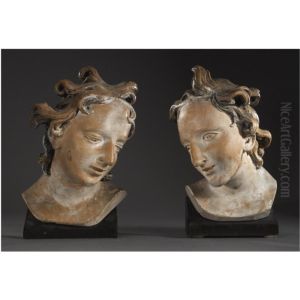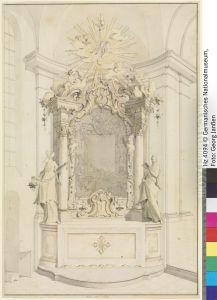Ignaz Gunther Paintings
Ignaz Günther was a prominent German sculptor and woodcarver of the Rococo period. Born on November 22, 1725, in Altmannstein, Bavaria, he became one of the most important artists of his time in Southern Germany. Günther is best known for his religious sculptures, which are characterized by their dynamic forms, delicate detailing, and expressive figures.
Ignaz Günther honed his skills at the Academy of Fine Arts in Vienna, where he studied under renowned sculptor Jacob Schletterer. After completing his studies, he returned to Bavaria, where he quickly gained recognition for his work. His sculptures were sought after for churches, monasteries, and private patrons who appreciated his unique blend of spiritual intensity and elegant, graceful forms.
Throughout his career, Ignaz Günther developed a distinctive style that set him apart from his contemporaries. His figures often display a refined elegance and a sense of movement, with intricate draperies and soft, flowing lines. Günther's work is notable for its emotional depth, capturing the spiritual fervor of the Catholic Counter-Reformation, which was a significant force in Bavaria during his lifetime.
Some of Günther's most famous works include the high altar of the Abbey Church of Rott am Inn and the figures of the Twelve Apostles for the Church of St. Peter and Paul in Weingarten. His masterpiece is often considered to be the high altar of the pilgrimage church of the Scourged Saviour in Wies, a UNESCO World Heritage site. His works can be found in many churches across Southern Germany, where they continue to be admired for their beauty and devotion.
Ignaz Günther's influence on the Rococo style in Bavaria was profound, and his legacy lives on in the many pieces he left behind. He died on June 27, 1775, in Munich, leaving a lasting impact on the world of religious art. His sculptures are still studied and revered today for their technical mastery and their ability to convey complex emotions through wood and other materials.

